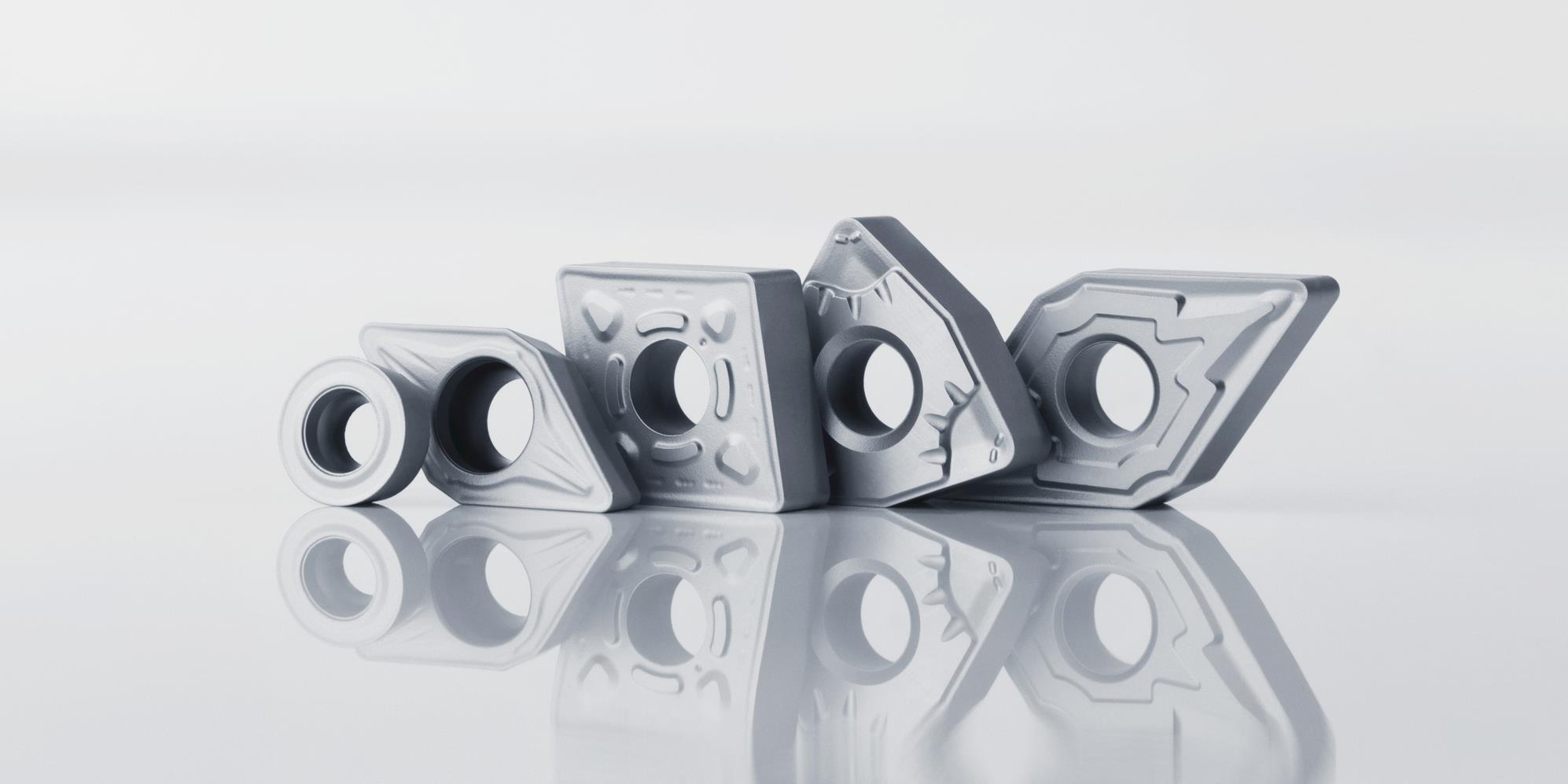DURATOMIC – Still The New Black
As Seco’s patented insert coating technology Duratomic enters its second decade, the company has released three new grades specifically for stainless steel turning. Among other things, the new TM grades offer customers used-edge detection technology, resulting in increased productivity. More than a decade ago, Seco R&D specialists realized that nanoscience could be harnessed to develop highly sophisticated coatings that offered thermal and chemical resistance, which could be extremely strong and durable, and which could be designed at an atomically thin level.
The result of their work was a patented insert coating technology that brought a combination of wear resistance and edge toughness to maximize insert grades in the prevention of cracks and breakage. They called it Duratomic. In this, the very first development of Duratomic in 2006, Seco R&D addressed the texturing of atomic layers in critical parts of the coating.
“There are different ways to manipulate the various parts of the coating, and different translations of the upper, bottom, and center layers for various usages. Knowing when and how to do it is what would I call the essence of Duratomic,” explains Mikael Lindholm, product manager, General ISO Turning. An early example of the technology proved that the coatings on steel offered a solution in the area of thermal inertia, which was an opportunity for Seco Tools’ automotive industry customers to improve their productivity in the turning area.

In particular, the evolution of new technology platforms has increased productivity, tool life predictability, and process reliability. These benefits, along with the chrome-colored used-edge detection, help customers prevent insert waste. “After Duratomic was introduced to the market ten years ago, we saw an exceptional increase in performance capabilities,” says Lindholm. “And today, by using a Duratomic TP1501 grade, commonly used in the automotive industry, our customers have seen, on average, a further 25 percent improvement in their performance.”
Fast forward to 2020: Duratomic has gone from strength to strength and is present in turning, drilling, and milling applications.
“Seco Tools has always been expected to provide exceptional grade performance,” says Lindholm. “We are now in the second generation of Duratomic grades within milling. We recently released our Duratomic MP2501 and MP1501 grades, as well as three new grades within turning – TM1501, TM2501, and TM3501 — which are specifically for stainless steel turning.”
All these new Duratomic grades are designed to meet customers’ needs and feature the company’s most recent generation of the technologies, with the possibility of access to chrome used-edge detection. The Duratomic TM turning grades improve productivity in a range of materials, from easy, often austenitic stainless steel to demanding high-alloyed, super-duplex stainless steels. The chrome-colored used-edge detection makes it easier to detect any used edge and reduces potential waste.
“Used-edge detection was a challenge that was first identified more than five years ago,” says Lindholm. “A manufacturing customer in Germany asked us how they could make sure that they use all the edges before they recycle the products. We got to work on a solution.” It was clear to the team at Seco Tools that their customers were focused on achieving the same high performance in their operations while also reducing waste, with sustainability in mind. The development of the used-edge detection answered this demand. Duratomic continues to evolve.

“Continuous innovation is needed,” says Lindholm. “We have customers around the world: in the EU, North America, and Asia, who all have different needs, and we need to meet those today, as well as forecast what they will need in the future.” New ways of recycling have become one area that R&D is exploring. “In the stainless-steel industry, it’s very common to see recycling, and we would like to offer that support to our customers,” says Lindholm. “There are so many variables, and we have endless opportunities to meet customer requirements,” he continues. “It’s really necessary to understand how to connect the technologies to customer demand and their expectation of an outcome. Our sales units are instrumental in this process, and so is R&D.”
This content was originally published on the SECO tools website.

